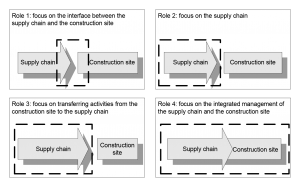Construction Supply Chain Management 101
Andrew Piland examines some practical ways to think about the construction supply chain and how Touchplan can help make your supply chain work.

Supply Chain Managers have to be able to understand demand signals. That means knowing what, when, where, and how things need to be delivered. It’s easy for Amazon; they know the ‘when’ is always as soon as possible, the ‘where’ is always as close to the house as possible, and because of their detailed analytics, lead times might start approaching negative figures soon. Packages could one day just show up at your door, and you won’t even be mad about it.
As a general principle, there are two trade-offs in supply chains. Efficiency and responsiveness. An efficient supply chain has a predictable, steady flow and is typically achieved with high volume and predictability. Take the petroleum supply chain, for example. Save for significant world events; consumption is more or less predictable.
Large capital construction projects are traditionally on the other end of the spectrum. With several interdependent activities frequently subject to unforeseen conditions, forecasting dates for materials, equipment, furnishings, etc., is difficult at best and is seldom delivered in a just-in-time manner.
Supply chain risk occurs at both ends of that spectrum. If overly efficient, any interruption carries with it a risk of starving a production system. If too responsive, it becomes difficult to manage. Balancing the push from the procurement schedule with the pull from jobsite operations should be every construction supply chain manager’s goal.
How do we frame this problem? Dr. Ruben Vrijhoef and Dr. Lauri Koskela outline the four supply chain management roles in construction. They are broken out as lines of effort between the supply chain at large and the construction site.
The industry’s challenges are much bigger than anything a single company can handle. The key word is collaboration, and your supply chain initiative has to start with forming partnerships.
Over the next few weeks, we will talk about some practical ways to think about the construction supply chain and how to leverage Touchplan to help make your supply chain work for you.
Ref: Vrijhoef, Ruben & Koskela, Lauri. (2000). The Four Roles of Supply Chain Management in Construction. European Journal of Purchasing & Supply Management. 6. 169-178. 10.1016/S0969-7012(00)00013-7.

